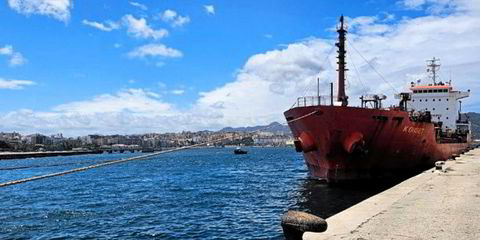ExxonMobil, BP and ConocoPhillips have unveiled new details of a massive project to export LNG from Alaska’s North Slope.The $45 billion to $65 billion concept, which the supermajors said still requires significant work, involves building three trains of 5 million to 6 million tonnes per annum apiece.The companies, along with Canadian pipeline player TransCanada, were thought to have been focusing on building a 1300-kilometre gas pipeline from Prudhoe Bay in the Arctic to the oil export centre of Valdez or Nikiski, home of the soon-to-be shuttered Kenai LNG plant.However, they have now revealed that 22 locations are under consideration for the pipe end-point in the Cook Inlet, Prince William Sound and other sites in south-central Alaska.The companies have also made some progress on consolidating ExxonMobil and TransCanada’s Alaska Pipeline Project and the Alaska Gasline Development Corporation, which are pursuing pipe projects under separate frameworks.In the four decades since the discovery of 35 trillion cubic feet of gas resources on the North Slope, attention has shifted from supplying the now-saturated North American market to LNG.Alaska still faces a long haul before the Arctic gas ever reaches international markets with a timeline of eight to 10 years to operation forecast once concept definition is complete. Given the hefty price tag, the three supermajor leaseholders will be keen to see how much they will get in state support and tax cuts in exchange for creating up to 15,000 peak construction jobs.“The producers look forward to working with the state to secure fiscal terms necessary to support the unprecedented commitments required for a project of this scope and magnitude and bring the benefits of North Slope gas development to Alaska,” they said in a letter to Alaska Governor Sean Parnell.While there is no shortage of resources or demand from utility customers for potential LNG volumes, the problem is everything in between — miles and miles of North America’s most forbidding terrain, although the route will follow the Trans-Alaska oil pipeline.Construction costs put the proposal at a competitive disadvantage, said Larry Persily, the federal co-ordinator for Alaska natural gas transport projects. However, “once you get into a liquefaction plant you have a shorter tanker run, so that puts you at a competitive advantage”, he added.Governor Parnell and other government officials have spent recent weeks courting potential LNG buyers in Asia.TransCanada and ExxonMobil have been running a second non-binding open season for the Alaska Pipeline Project to Valdez. The Alaska Gasline Port Authority, a grouping of local government bodies working separately towards a pipeline route to Valdez, said it submitted bundled nominations from Asian end-users totalling 2.8 billion cubic feet per day.
Latest Jobs

Super-sized North Slope
Huge cost and technical risks for Alaska pipeline and LNG concept.
5 October 2012 11:25 GMT
Updated
5 October 2012 11:25 GMT
By



